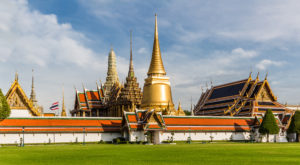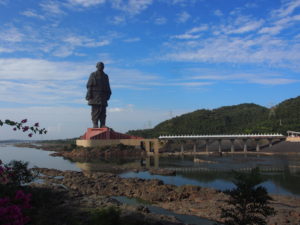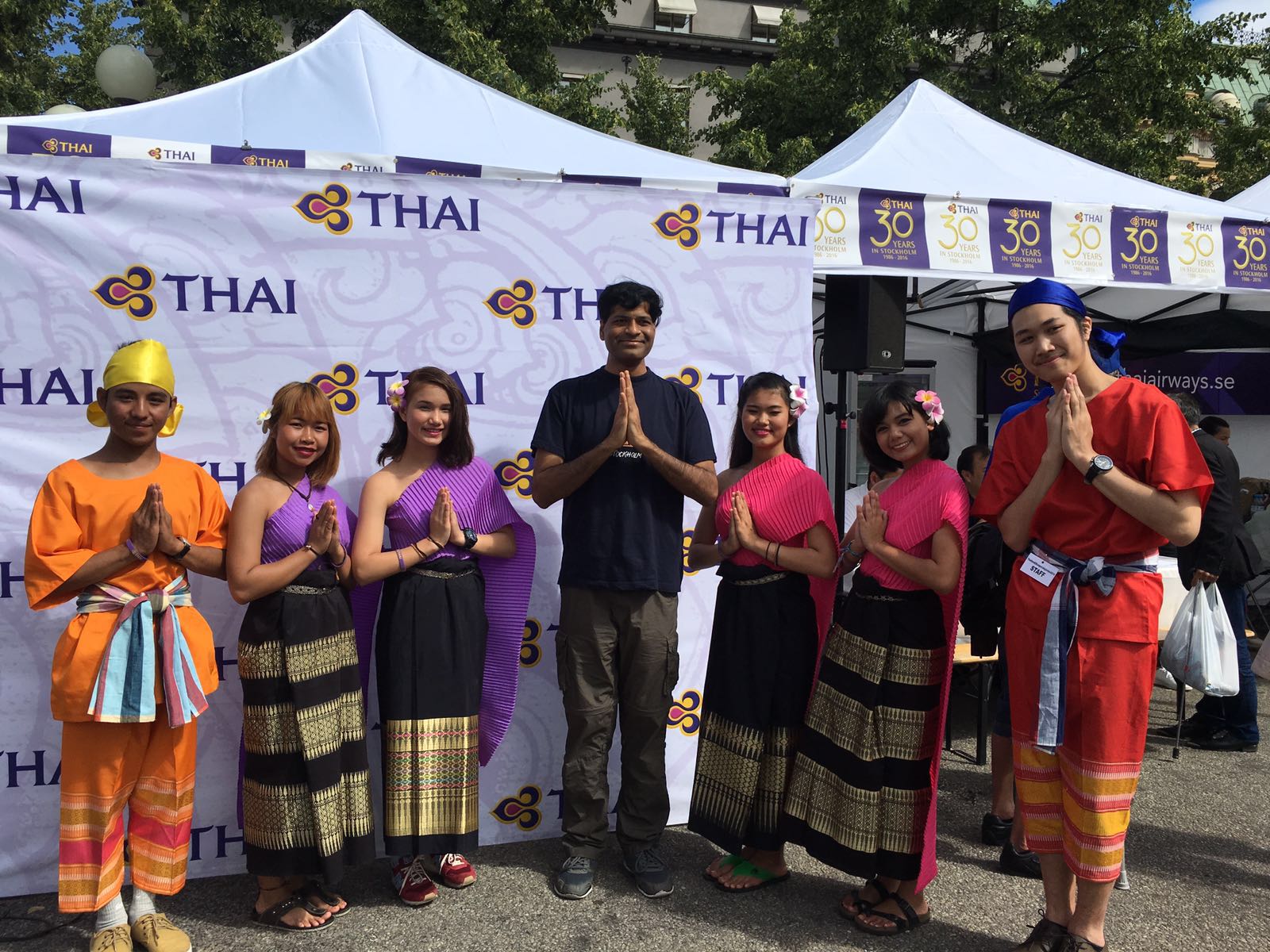
Bangkok has an Official ceremonial name and it is the longest full ceremonial name with 168 letters composed of sanskrit & pali root words and it translates / means ´´City of angels, great city of immortals, magnificent city of the nine gems, seat of the king, city of royal palaces, home of gods incarnate, erected by Vishvakarman at Indra’s behest´´. The name is listed in Guinness World Records as the world’s longest place name, at 168 letters
BANGKOK – THE PLACE WITH THE LONGEST OFFICIAL CEREMONIAL NAME IN THE WORLD !
- Bangkok has an Official ceremonial name and it is the longest full ceremonial name with 168 letters composed of sanskrit & pali root words and it translates / means ´´City of angels, great city of immortals, magnificent city of the nine gems, seat of the king, city of royal palaces, home of gods incarnate, erected by Vishvakarman at Indra’s behest´´
- The name is listed in Guinness World Records as the world’s longest place name, at 168 letters
- The city is now officially known in Thai by a shortened form of the full ceremonial name, Krung Thep Maha Nakhon, which is colloquially further shortened to Krung Thep
- Bangkok is the city’s official English name, as reflected in the name of the Bangkok Metropolitan Administration
SAWATDI KHRAP !
Wai – The traditional Thai greeting
The wai is a sign of respect and reverence for another, similar to the namaste greeting of India and Nepal

“sawatdi khrap” for male speakers, and “sawatdi kha” for females
- The traditional Thai greeting, the wai, is generally offered first by the younger of the two people meeting, with their hands pressed together, fingertips pointing upwards as the head is bowed to touch face to fingertips, usually coinciding with the spoken words “sawatdi khrap” for male speakers, and “sawatdi kha” for females
- The elder may then respond in the same way. Social status and position, such as in government, will also have an influence on who performs the wai first
- For example, although one may be considerably older than a provincial governor, when meeting it is usually the visitor who pays respect first
- When children leave to go to school, they are taught to wai their parents to indicate their respect
Thai culture : Glimpses
- Thai culture has been shaped by many influences, including Indian, Lao, Burmese, Cambodian, and Chinese
- Its traditions incorporate a great deal of influence from India, China, Cambodia, and the rest of Southeast Asia
- Thailand’s national religion, Theravada Buddhism, is central to modern Thai identity
- Thailand’s prevalent religion is Theravada Buddhism, which is an integral part of Thai identity and culture
- Active participation in Buddhism is among the highest in the world
- Thai Buddhism has evolved over time to include many regional beliefs originating from Hinduism, animism, as well as ancestor worship
- The official calendar in Thailand is based on the Eastern version of the Buddhist Era (BE), which is 543 years ahead of the Gregorian (Western) calendar. Thus the year 2015 is 2558 BE in Thailand
- Years are numbered as B.E. (Buddhist Era) in educational settings, civil service, government, contracts, and newspaper datelines
- As with other Asian cultures, respect towards ancestors is an essential part of Thai spiritual practice
- Thais have a strong sense of hospitality and generosity, but also a strong sense of social hierarchy
- Seniority is paramount in Thai culture
- Elders have by tradition ruled in family decisions or ceremonies. Older siblings have duties to younger ones
- Taboos in Thailand include touching someone’s head or pointing with the feet, as the head is considered the most sacred and the foot the lowest part of the body
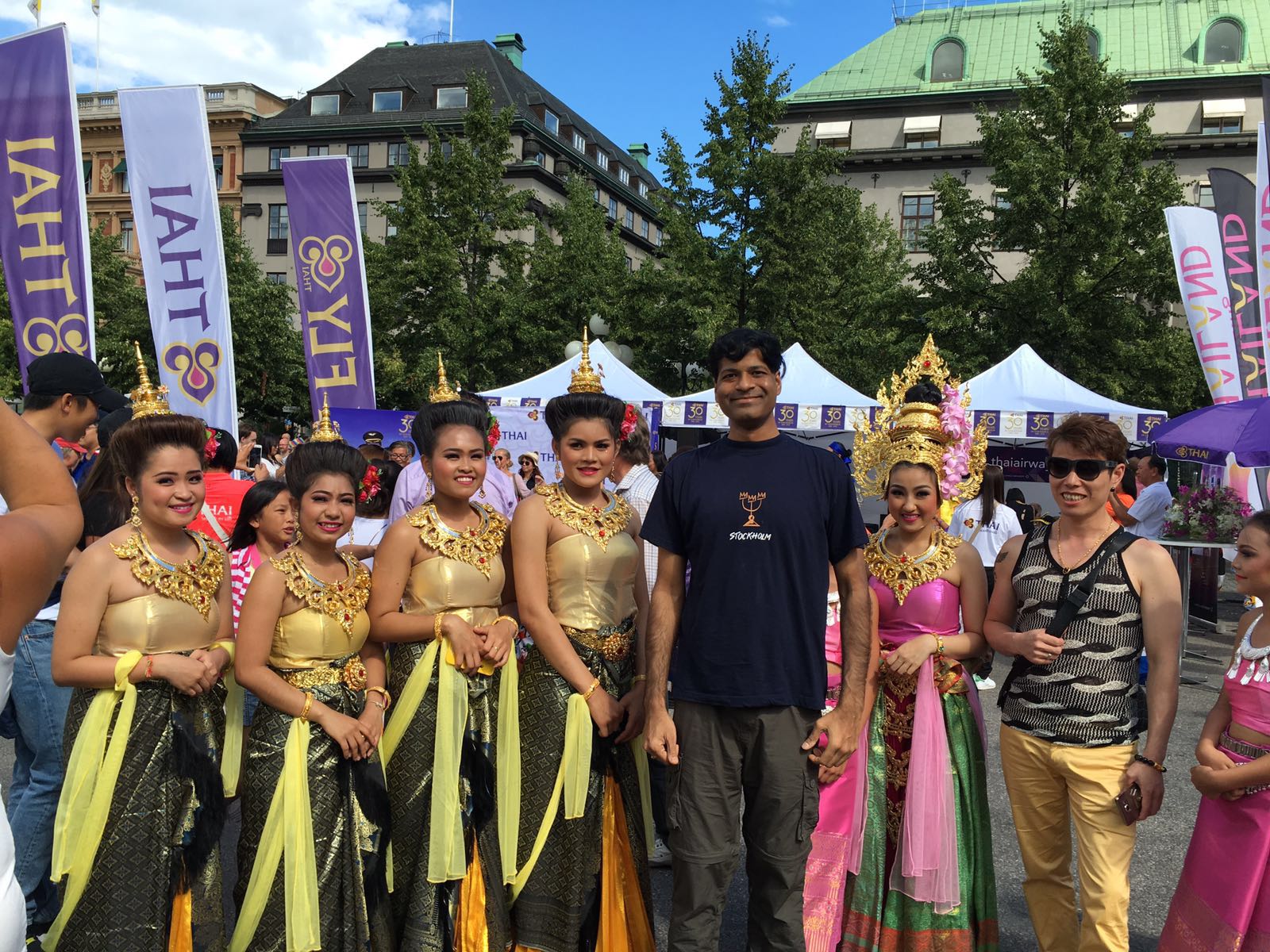
Garuda – the Official emblem of the countries of Thailand & Indonesia as well as the city of Ulan Bataar (Mongolia)
- The national emblem of Thailand is “Garuda as the vehicle” (of Vishnu)
- The Garuda was officially adopted as the national emblem by King Vajiravudh (Rama VI) in 1911
- However, the mythical creature had been used as a symbol of royalty in Thailand for centuries
- The Garuda is depicted on seals, which are used by the King of Thailand and the Government of Thailand to authenticate official documents and as its primary emblem
- The Garuda is a mythological beast of the Hindu and Buddhist tradition
- According to Hindu mythology, the Garuda is the vahana (vehicle) of the god Vishnu (more commonly known in Thailand as Narayana)
- The ancient kings of Thailand believed in divine kingship, and considered themselves the incarnation of the god Narayana
- Thus, the Garuda came to symbolise the divine power and authority of the king
- The Garuda also features in the national emblem of Indonesia and the emblem of the city of Ulaanbaatar (the capital of Mongolia)
Garuda – the Symbolism
- The Garuda’s physical strength and martial prowess is recounted in the Sanskrit Puranas
- In these stories he is described as the most powerful of all the winged-creatures and as such is regarded as the king of all the birds
- In Buddhist literature, the Garuda lives in the legendary Himavanta forest and is regarded as semi-divine or supernatural
- In the Buddhist tradition the emphasis is put on the Garuda’s deeds, which portray him as a righteous and merciful being
- According to the Mahabharata, the Garuda was so powerful that no god could defeat him in battle, eventually the Hindu god Vishnu intervened
- Impressed with his abilities, Vishnu made the Garuda immortal and promised him a higher seat than that of his own
- Henceforth, the Garuda became the ‘vahana’ or vehicle of Vishnu and was allowed to sit atop the god’s flagpole as a reward
- The Garuda’s relationship with Vishnu or Narayana is especially significant
- The doctrine of ancient Thai kingship was heavily influenced by those of India
- Accordingly, the king was nothing less than an ‘avatar‘ or incarnation of god, just as King Rama of the epic Ramayana was the incarnation of Narayana
- Thus, the god Narayana and the Garuda became the accepted symbol of divine and sacred kingship in ancient Thailand
Thai Culture : Heavy influences and drawn from Indian Culture
- The popular Ramakien epic is based on the Hindu Ramayana
- The former capital of Ayutthaya was named for Ayodhya, the Indian birthplace of the Hindu god Rama
- There is a class of brahmins who perform rituals for Hindu gods
- Brahmin rituals are still common, including the use of holy strings for blessing and pouring of lustral water from conch shells
- Hindu deities are worshipped by many Thais despite their official Buddhism, and statues and shrines of Brahma, Ganesh, Indra, Shiva, Vishnu, Lakshmi and other Hindu gods are a common sight (for example the Erawan Shrine area)
- Another relic of Hinduism is Garuda, now a symbol of the monarchy and the emblem of Thailand !
BANGKOK : SPECTACULAR VIEWS & EXPERIENCES
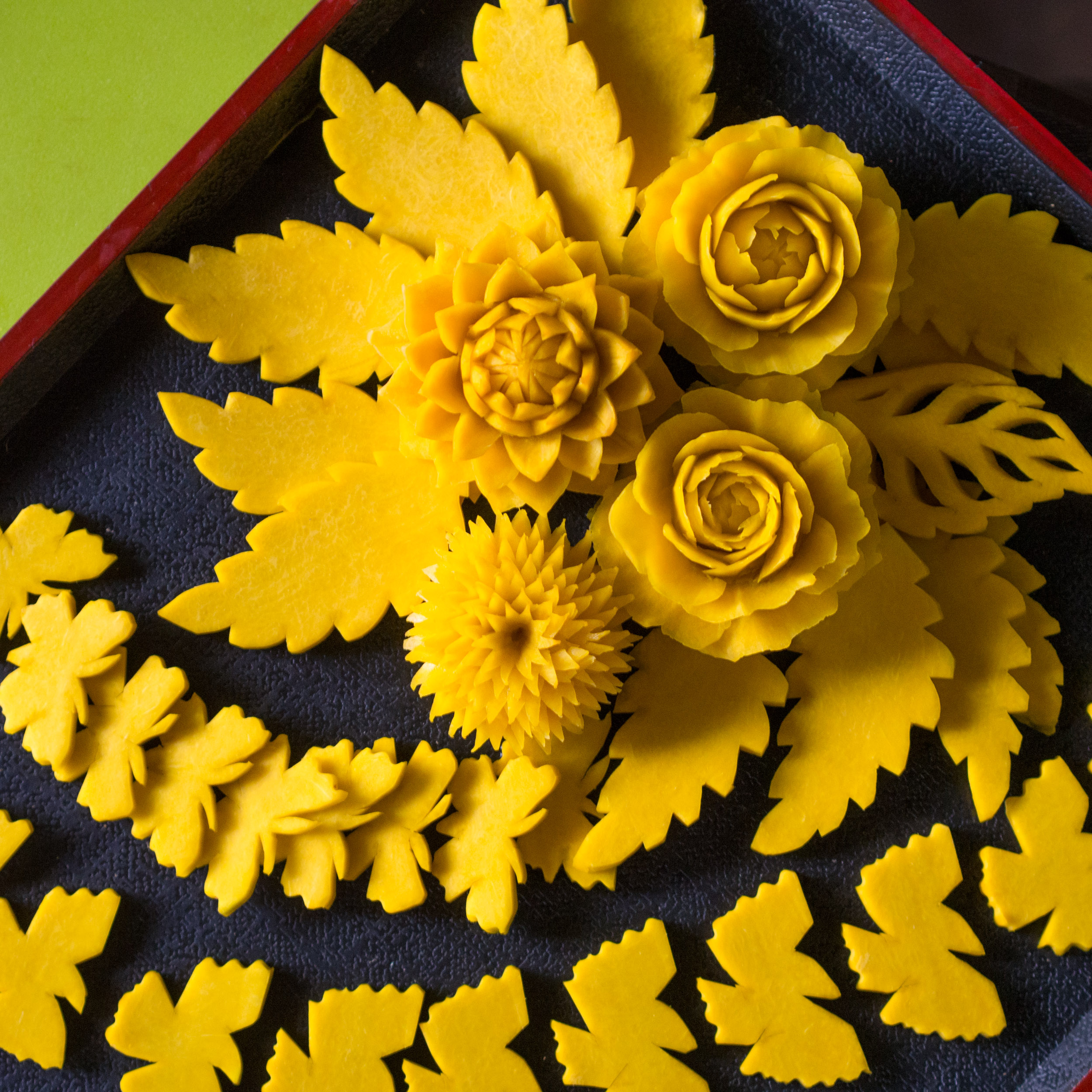
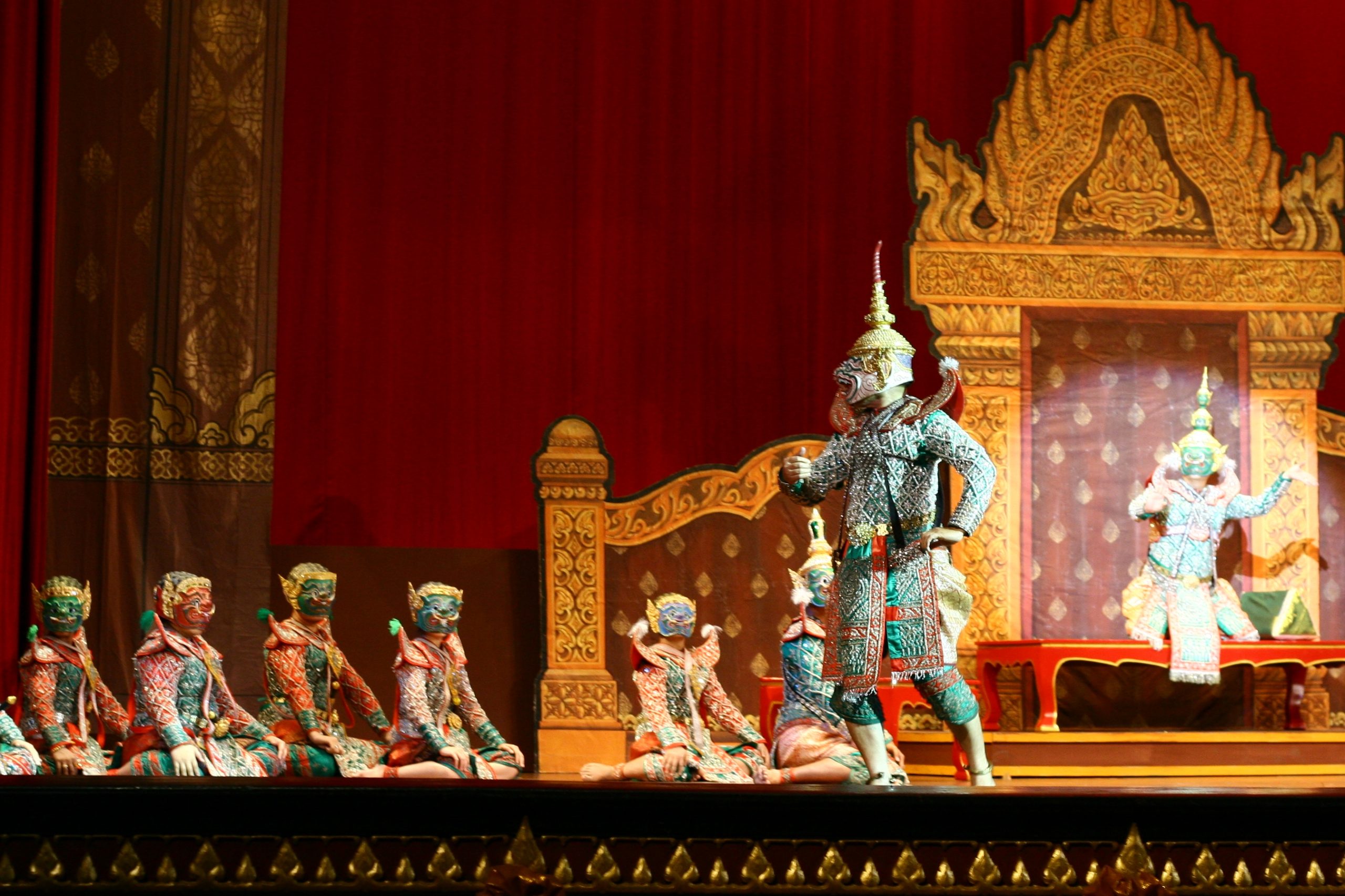
Khon roles are dictated by long-standing tradition. The principal characters are the heroes, the heroines, the ogres, and the monkeys. The monkeys are some the most important roles in Khon. The best-known monkey characters in the story is the monkey warrior Hanuman
